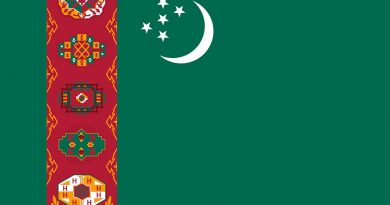Charlie Hebdo Refuses to Back Down
By Mohammed Syed
Staff Writer
Cherif and Said Kouachi’s actions shook France to its core on Jan. 7, when they forced their way into the office of French weekly satirical newspaper “Charlie Hebdo”, armed with assault rifles, and massacred eleven people, additionally injuring eleven, in hatred of the magazine’s constant lampooning of Islam.
After escaping, the Kouachis were tracked in a manhunt for two days ending in two sieges and a police operation in which they hijacked two cars, robbed a service station, holed up in a building while surrounded by hundreds of policemen, and came out shooting with the intention of dying a “martyr’s death.”
Out of the ashes of the tragedy rose the slogan, “Je suis Charlie”, french for ‘I am Charlie’ adopted by supporters of free speech and press around the world. The slogan quickly went viral on Twitter, and became the symbol of resilience in the face of terrorism and the suppression of freedom of speech.
On Jan. 12, “Charlie Hebdo” carried on with their publishing unabated, and revealed their magazine cover for the week of Jan. 14. It featured a cover illustration depicting the Prophet Muhammad shedding a tear while holding a sign with the “Je suis Charlie” slogan on it, standing below the words “Tout est pardonné,” french for “All is forgiven.”
The staff originally thought that they would not be able to publish in time due to the destruction of their offices and equipment, but other media organizations gave their support from around the world and offered practical and financial help. The staff met in the office of the French newspaper “Liberation”, and the newspaper “Le Monde” loaned them computers so they could work on the magazine.
The cover was designed by Renald Luzier, who works under the pen-name of Luz. He narrowly escaped the shooting himself. He was out celebrating with his wife for his birthday. He arrived at the office just as the gunmen were leaving and was shot at, but not hit.
In an interview with “Liberation”, Luz stated, “With this cover, we wanted to show that at any given moment, we have the right to do anything, to redo anything, and to use our characters the way we want to. Mohammed has become a character, in spite of himself, a character in the news, because there are people who speak on his behalf. This is a cover aimed at intelligent people, who are much more numerous than you think, whether they’re atheists, Catholics, or Muslims.”
The cover was released following the day after an estimated 1.5 million people marched in Paris in order to show solidarity with “Charlie Hebdo”. “Washington Post” reported that “on the streets of Paris, Christians, atheists, Jews and Muslims stood side by side, sending up shouts of ‘Charlie, Charlie, freedom of speech!’”
Joachim Roncin, a staffer at fashion magazine “Stylist”, created the slogan “Je suis Charlie” which has been shared by people and media outlets around the world. He had barely 400 followers at the time, but his hashtags #JeSuisCharlie and #IAmCharlieHebdo were shared in over 5 million tweets.
“This is what Je Suis Charlie actually means: I am free, I am not afraid,” said Roncin in an interview with BBC News.
While “Charlie Hebdo” typically has a publication of about 60,000 subscribers, the “Je Suis Charlie” edition ran beyond five million, selling internationally.
Some radical Muslims did not react to the cover positively, with sectarian riots in Niger resulting in 10 deaths, with more than 170 injured and 45 churches burnt. Algeria, Somalia, Sudan, Afghanistan, India, Pakistan, Mali, Senegal, and Mauritania also saw protests.
Many European Muslims also took to constructively criticizing Charlie Hebdo’s practices. “They’re making Charlie Hebdo into the symbol of France and of freedom of speech,” said M’hammed Henniche, Secretary General of the Union of Muslim Associations of Seine-Saint-Denis, in an interview with The Atlantic. “A newspaper can’t insult a segment of the population and be the symbol of France.”
However, most Muslims around the world condemned these protests and tensions, arguing for peace and impartiality on the subject.
After attending the Paris Unity March, U.S. Attorney General Eric Holder announced that U.S. President Barack Obama intends to hold a security summit in Washington on February 18 to discuss violent extremism prevention with various world leaders.

